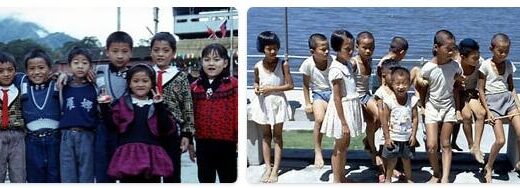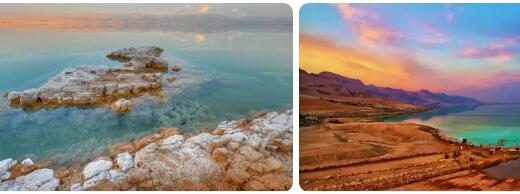Palestine from 1993 to 2000
From Oslo to Camp David (1993 to 2000): In the wake of the Madrid Middle East Peace Conference (1991), the first approaches to solving the Palestine question were brought about by the secret negotiations between Israel and the PLO in Oslo (1993) with the – not undisputed – declaration of principles of September 13th. 1993 on the gradual transition to autonomy in the territories occupied by Israel (Gaza-Jericho Agreement). On October 13, 1993, the Declaration of Principles came into force as a framework agreement. After that, the autonomy was initially v. a. limited to the areas of education, culture, health and social services as well as customs, taxation, industry, agriculture and tourism, Israel should remain responsible for foreign and security policy until the final settlement. The agreement on partial Palestinian autonomy, also known as the Cairo Agreement, of May 4, 1994 is also part of the “Oslo I Agreement”. The transition to Palestinian autonomy was agreed within a maximum of five years. The Interim Agreement (Taba Agreement,September 24, 1995, signed in Washington on September 28, 1995; “Extended Autonomy Agreement” or “Oslo II”) as well as other agreements specified the structure and self-administration of the Palestinian autonomous territories and stipulated stages of land restitution to the Palestinians. Renegotiations became necessary because of the delayed Israeli troop withdrawal and the continued Israeli settlement activity in the occupied territories. They led to the Hebron Agreement (January 15-17, 1997) and the two Wye Agreements (1998 and 1999).
In accordance with the Gaza-Jericho Agreement, the first step towards Palestinian autonomy took place on 16-17. 5. In 1994 the transfer of certain administrative tasks and government powers of the Israeli military and civil administration to the Palestinian (National) Authority; on July 5th, 1994 this officially started its work. Arafat was its chairman was appointed by the PLO Central Council on October 12, 1993 (with the approval of the Gaza-Jericho Agreement). In addition, the establishment of a Palestinian police force began (from May 10th / 12th, 1994) and the release of Palestinian prisoners from Israeli prisons. On the basis of the other partial autonomy agreements, the provisional Palestinian self-government was extended to other parts of the West Bank from August 27, 1995 (handover of various places and cities to the Palestinians). However, the Israeli military and civil administration delayed the withdrawal of the Israeli occupation in the individual stages compared to the agreed schedule.
According to the Taba Agreement, the Palestinians elected a “Palestinian Legislative Council” (English name Palestinian Legislative Council, abbreviation PLC; also called Autonomierat) on January 20, 1996, and the PLO / Al-Fatah won the election. Of the 88 members of the PLC, 50 were from Al-Fatah. Of the total of 35 “Independents”, a number were close to Fatah. Seven were labeled as being affiliated with Hamas, even though Hamas and some radical groups within the PLO had officially boycotted the election. With just under 88% of the vote, Arafat was also elected President (Rais) of the Autonomous Authority.
Although the interim agreement provided for this, no serious attempt was made from 1996 to build a functioning democracy. Arafat’s authoritarian style of government, supported by over 30,000 police officers and 40,000 civil servants and more than half a dozen different intelligence agencies, could not be controlled by the Palestinian Legislative Council. The legal system did not come close to the standard of a constitutional state: On the one hand there were arbitrary arrests and torture, on the other hand there was no law because – in addition to the pending constitution – many executive laws were missing and the separation of powers was systematically violated. Overall, the development of democratic structures in the autonomous areas was severely impaired by the economic and social underdevelopment:Gaza Strip only over US $ 1,340 (compared to over US $ 16,200 in Israel). While economic growth was between 5% and 7% between 1998 and October 2000, it has declined sharply since the beginning of the Intifada.
The withdrawal from the autonomous areas, which fell short of Israel’s promises, as well as the further expansion of existing and the establishment of new Israeli settlements under all Israeli governments repeatedly led to anti-Israel riots; Israel responded to acts of terrorism by Hamas and Jihad Islami by cordoning off the autonomous areas, in some cases for weeks, to make it more difficult for suicide bombers to penetrate the Israeli heartland. As a result, around 125,000 Palestinian day laborers were temporarily unable to enter Israel, which worsened the living standards of their families and promoted anti-Israel attitudes among the population.
The negotiations on the final status, which were suspended by Netanyahu and should be concluded by May 4, 1999, did not begin until September 1999 under the new Israeli Prime Minister E. Barak (elected May 17, 1999). The American President B. Clinton previously had Arafat in early 1999 pledged his support for the establishment of Palestinian statehood, whereupon the latter suspended the proclamation of a Palestinian state planned for early May 1999 in view of the upcoming elections in Israel and the associated prospects for serious negotiations. The proclamation was then made binding in the Wye II Agreement (September 5, 1999) on September 13, 2000, but after the failure of the Middle East Summit convened by US President B. Clinton in Camp David. In July 2000, it was postponed again to November 15, 2000, the Palestinian national holiday – a date that became obsolete due to the fighting in the “second intifada” that broke out at the end of September 2000 (renewed escalation of the Middle East conflict). The main points of contention at the Camp David summit were, in addition to securing a Palestinian statehood, including the definition of borders, v. a. the question of the refugees’ right of return from 1948/49 and the future of the Israeli settlers in the Gaza Strip and the West Bank, including East Jerusalem. Another key problem at the Camp David summit was the issue of the status of Jerusalem. According to the intermediary, Clinton, Israel would be subject to restrictions agreed to recognize a Palestinian state in Gaza and the West Bank; its seat of government was to be built in Abu Dis – as a district of Jerusalem. But even if the negotiations had not failed, Barak would not have had a chance to push through his compromise ideas in the Knesset, since in July 2000 he no longer had a majority there.



